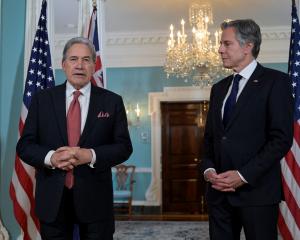
Prime Minister Jacinda Ardern paid her first successful visit to China early this month.
Both sides reiterated shared commitment to the Comprehensive Strategic Partnership, and Ms Ardern discussed the Belt and Road Initiative (BRI) with Chinese counterparts, pointing out the initiative would help identify opportunities for mutually beneficial and transparent co-operation.
BRI has drawn worldwide attention and it is only natural it provokes different reactions. I remember a cartoon depicting a panda (not necessarily capable of kung fu) walking a kiwi bird with a ''belt'' tied to the bird's neck along the ''road''. If we have the patience to read through political pages occasionally, it is easy to come across articles on BRI titled ''debt traps for developing world'' or ''China's geopolitical conspiracy'', and you will find out political articles are not always tedious.
To some, BRI seems like the poisoned apple offered to Snow White by the Evil Queen, nice and sweet but fatal. However, some see BRI as the panacea to all their problems, just like panadols prescribed by GPs. I would deny either description.
Firstly, BRI is by no means poison or trap. It seeks to remove development bottlenecks through enhanced connectivity.
Since the concept was proposed in 2013, China has directly invested more than $US60billion ($NZ90billion) in countries along the Belt and Road, creating nearly 300,000 new jobs and more than $US2billion of tax revenue for these countries.
Debt sustainability has been highlighted in project financing. According to some media reports, China infringed upon the sovereignty of Sri Lanka through debt traps, but actually, most Chinese loans are long-term favourable ones. Sri Lanka's debt to China accounts for only 10% of its total debts, lower than that to Asian Development Bank, the World Bank or other Western creditors. China has also waived debts of the least developed African countries. There is no proof that sovereignty has been surrendered or heavy burden suffered by BRI participants.
Actually, more than 150 countries and international organisations have signed co-operation deals on BRI so far. And BRI propositions have been endorsed in documents of the United Nations, the G20 and Apec. I do not know if any country has ever succeeded in trapping so many in history, even through using coercive forces.
Second, BRI is not a panacea. Though BRI is public goods provided by China, it is up to all participating countries to make full use by identifying their own interests and comparative advantages.
Co-operation under BRI follows the principles of wide consultation, joint contribution and shared benefits. It reflects an approach featuring mutual respect, equity, inclusiveness and win-win. Though common goals like policy co-ordination, infrastructure connectivity, unimpeded trade, financial integration and closer people-to-people ties have been proposed, there is no fixed formula for BRI co-operation and each participating country could devise their own templates to maximise benefits.
New Zealand takes the lead in BRI co-operation among developed countries. It signed a memorandum of arrangement on strengthening BRI co-operation in 2017. A report issued by the New Zealand China Council last year has identified trade facilitation, supply-chain connectivity, linking China with South America, innovation and creative sectors as four prioritised areas where New Zealand could contribute to BRI. The role of New Zealand as both geographic and creative hub could thus be strengthened. Participation in BRI would better connect the country to the world.
After the Minister of Science and Innovation, Paul Goldsmith, attended the First international Forum on Belt and Road Co-operation in 2017, the Minister for Trade and Export Growth, David Parker, will lead a business delegation to the second forum, to be held soon in Beijing. The forum will send a positive message of promoting growth and building an open global economy.
As both countries are working to accelerate the process of negotiation on a free trade agreement upgrade and to strengthen common grounds on supporting multilateral trade regimes like the World Trade Organisation against a backdrop of rising protectionism, BRI co-operation could provide impetus for our joint efforts.
It is also worth mentioning the celebration of 2019 China-New Zealand Tourism Year. It is a good opportunity to promote people-to-people exchanges and enhance mutual understanding of respective cultures as another priority of BRI. Connectivity among hearts and minds is more important than infrastructure.
Much could be envisaged from BRI co-operation. It requires innovative new thinking, open minds and ingenuity to chart the course. We need to take sensible and realistic attitudes towards BRI and get ourselves better prepared for the roles to play.












